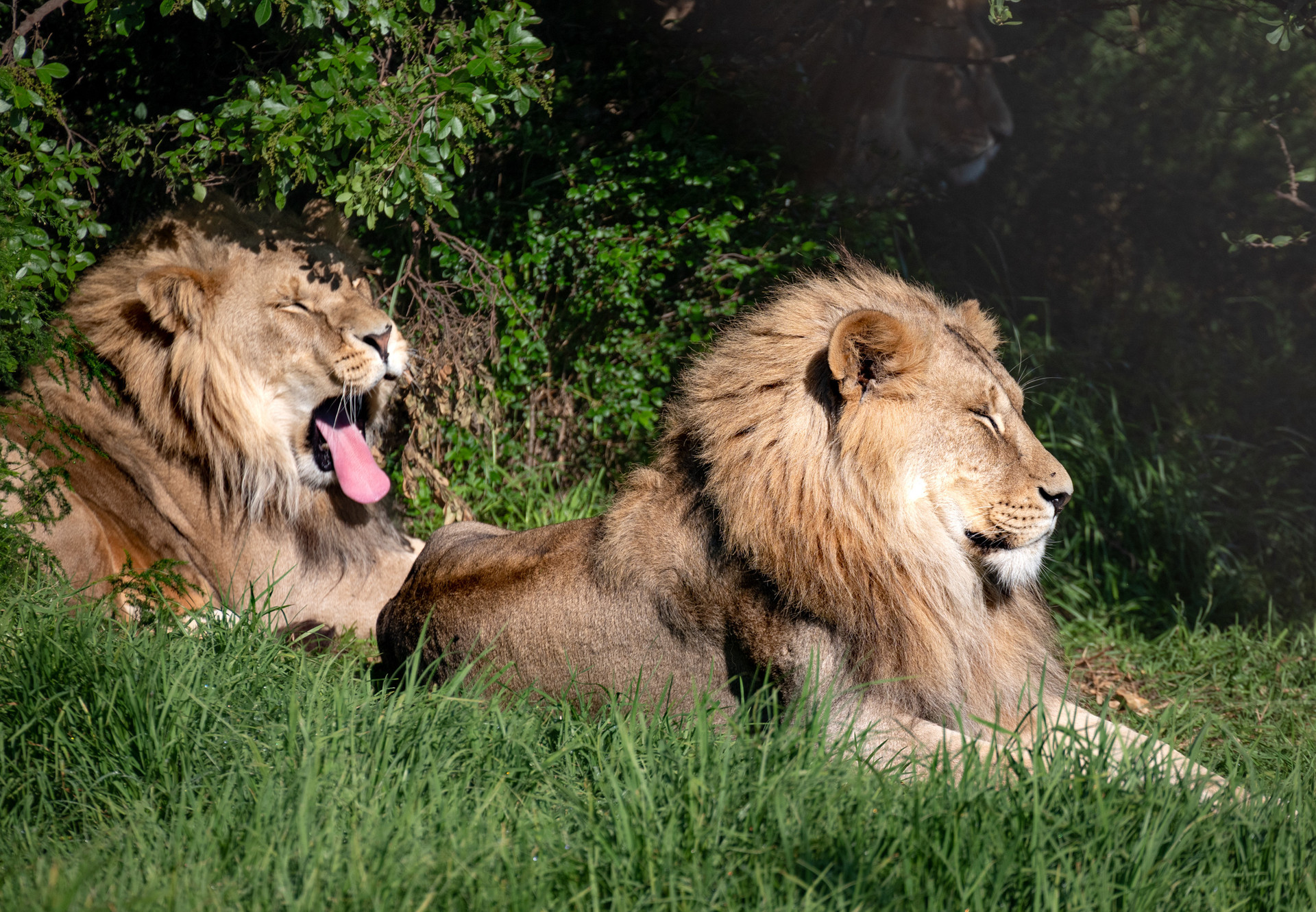
FELIDA quiz
Questions and answers about big cats and FELIDA Big Cat Sanctuary!
questions About big cats
Test your knowlegde!
Question - of -
1. What are the big cat species?
Yes, you are right! There are five big cat species: the lion (Panthera leo), tiger (Panthera tigris), jaguar (Panthera onca), leopard (Panthera pardus) and snow leopard (Panthera uncia). Learn more about those species here.
Sorry, your answer is not correct. There are five big cat species: the lion (Panthera leo), tiger (Panthera tigris), jaguar (Panthera onca), leopard (Panthera pardus) and snow leopard (Panthera uncia). Learn more about those species here.
2. All the big cat species are declining world wide. What is/are the reason(s) for this?
Yes, you are right! The main threats to big cat populations are habitat loss, human–wildlife conflict, (illegal) wildlife trade and hunting. Wild population numbers would benefit more from habitat protection than from the release of captive big cats into these environments. Learn more about the threats to big cat populations here.
Sorry, your answer is not correct. There are several main threats to big cat populations. Learn more about those threats here.
3. How do we call the trophy hunt on captive bred lions?
Yes, you are right! Canned hunting mainly concerns the hunting of lions. For the hunter everything is made as easy as possible. The animals were born in captivity and are accustomed to humans. They are released in a fenced-off area, which means they cannot escape. Read more about canned hunting here.
Sorry, your answer is not correct. This very cowardly form of hunting is the so-called ‘canned hunting’. Read more about canned hunting here.
4. Is the trade in tigers in the EU illegal?
Yes, you are right! Trading tigers from the wild is illegal in the EU, but trading tigers which were born in captivity is not. FOUR PAWS wants to ban the trade in captive bred tigers in Europe. Read more about our work here.
Sorry, your answer is not correct. Trading tigers from the wild is illegal in the EU, but trading tigers which were born in captivity is not. FOUR PAWS wants to ban the trade in captive bred tigers in Europe. Read more about our work here.
5. How many wild tigers are estimated to live in the wild?
Yes, you are right! Unfortunately, the world has already lost over 90 percent of its tigers and there are only an estimated 3,900 tigers left in the wild. This dramatic decline is a result of a relentless demand for tigers traded for their parts but also to be displayed commercially. Read more about our work to stop the tiger trade.
Sorry, your answer is not correct. There are an estimated 3,900 tigers left in the wild. This dramatic decline is a result of a relentless demand for tigers traded for their parts but also to be displayed commercially. Read more about our work to stop the tiger trade.
6. True or False? Tigers smell with their teeth and tongues while snarling.
Yes, correct! Tigers do not smell with their teeth and tongues, though this may look to be that case. Instead, tigers inhale scents by raising their lips, exposing their fangs and tongue, with a wrinkled nose, to draw the scent to the rooftop of their mouth to their Jacobson organ. This organ is a pouch-like structure located directly behind the front incisors. It functions through two small openings that direct scent particles from the air to nerves located within the structure. The nerves transmit the message to the part of the brain part of where scent is identified.
Points reached:
questions About felida big cat Sanctuary
Test your knowlegde!
Question - of -
1. Where is FELIDA Big Cat Sanctuary located?
Yes, you are right! FELIDA Big Cat Sanctuary is a project by FOUR PAWS, located in the Netherlands. Read more about FELIDA here.
Sorry, your answer is not correct. FELIDA Big Cat Sanctuary is a project by FOUR PAWS, located in the Netherlands. Read more about FELIDA here.
2. How many animals were transferred from FELIDA Big Cat Sanctuary to LIONSROCK Big Cat Sanctuary over the last years?
Yes, you are right! Twenty big cats were transferred from FELIDA to LIONSROCK. Learn more about those animals here.
3. Tiger Tsezar was...
Yes, you are right! Tiger Tsezar was exploited in a private club in Ukraine as well as used for intensive breeding. Get to know Tsezar.
4. What is the relation between lions Elza and Simba?
4. In which country was lion Nikola rescued?
Yes, you are right! In January 2022 FOUR PAWS was contacted by the local authorities of Montenegro about a illegally kept lion cub that had escaped from private keeping and was roaming the streets near Budva on the Adriatic coast. After 10 days the starved and exhausted lion cub, who got the name Nikola, was rescued and brought to a temporary safe place. Read more about his rescue here.
6. True or False? All FOUR PAWS sanctuaries and centres have a strict no-breeding policy.
Yes! That is correct. To avoid a suffering animal taken over by FOUR PAWS being replaced by another poor animal, FOUR PAWS seeks agreement with former owners and/or relevant authorities to refuse any further intake or breeding of big cats by the former owners. All FOUR PAWS sanctuaries and centres have a strict no-breeding policy, implemented by the application of contraceptive methods to prevent having more big cats that need to spend their lives in captivity instead of in the wild.


